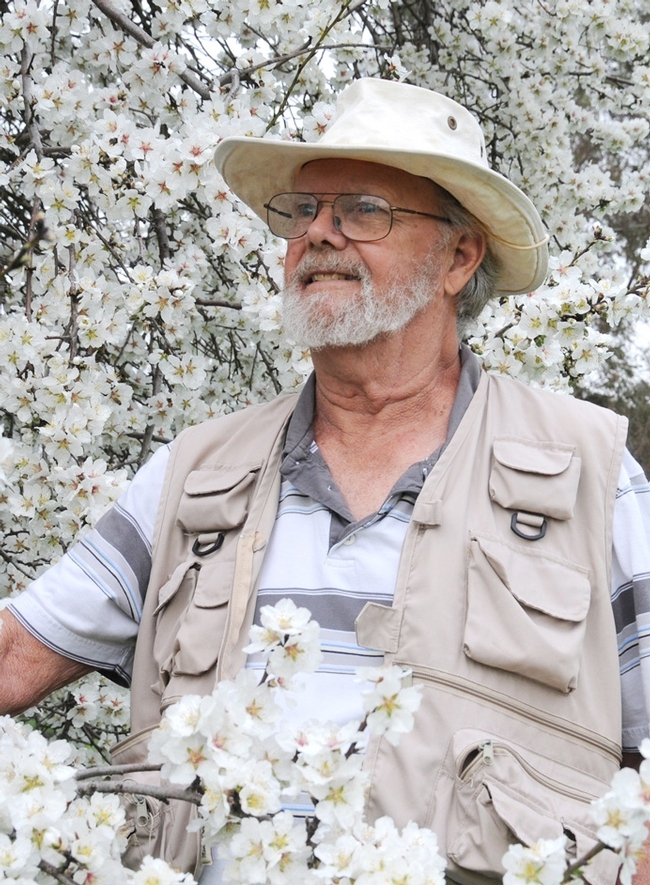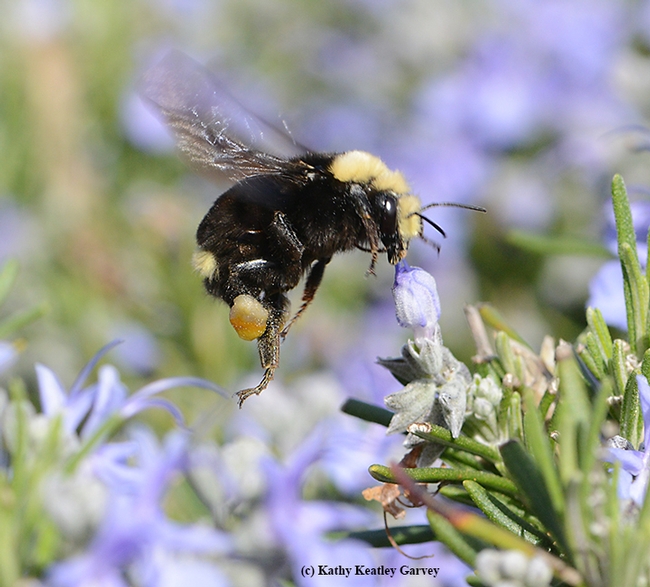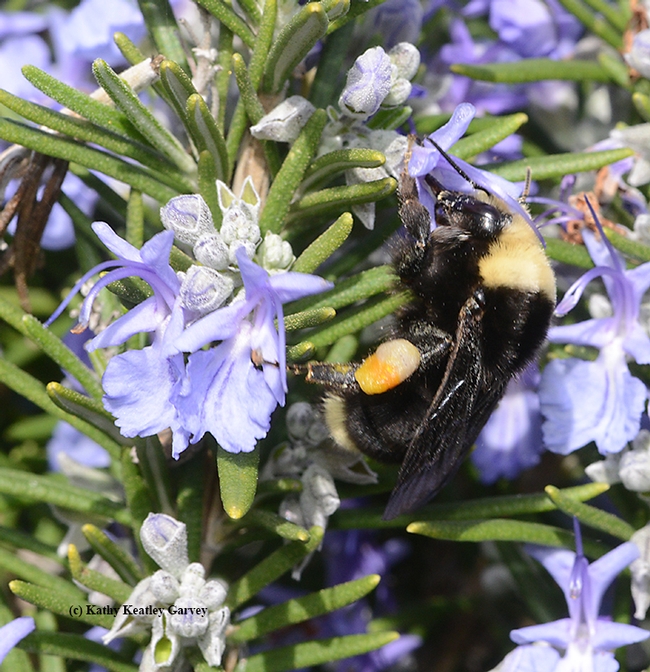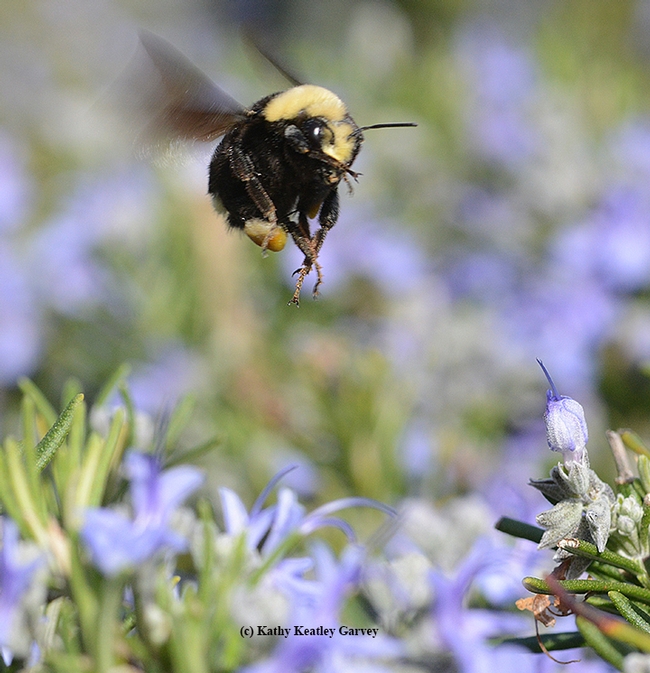
Feb. 14 was a perfect day for foragers, as the temperature climbed into the '70s, an unusually warm February day.
The site: The Glen Cove Marina in Vallejo, Calif., across the Carquinez Straits from Crockett.
We focused on one Bombus vosnesenskii--but only because the other four buzzed out of camera range. For 10 minutes, we watched her work the rosemary, buzzing from flower to flower as honey bees and syrphid flies zeroed in for their share, too.
But look at the bumble bee's pollen load, reminiscent of Halloween candy corn, those triangle-shaped yellow, orange and white-layered sweets.
"She obviously switched from one plant species with pale pollen to one with orangish pollen and maybe back again during her foraging bout," noted native polinator specialist Robbin Thorp, distinguished emeritus professor of entomology at UC Davis and co-author of California Bees and Blooms: A Guide for Gardeners and Naturalists (Heydey) and Bumble Bees of North America: An Identification Guide (Princeton University Press.)
"A fickle forager," Thorp declared. "Rosemary has whitish pollen, but it is usually a nectar resource for honey bees and others. So there must be some other plants being visited by B. vos. females in the area."
Indeed there were. California golden poppy (the state flower), wild radish, oxalis, and mustard.
"Detective" Thorp quickly figured it out. "The wild radish, mustard, and oxalis all have yellow pollen. Poppy has orange pollen. So it looks like your female may have started on rosemary (upper whitish part of the load), moved over to poppy for a while, and back to rosemary (bottom pale part of the load). Since poppy produces no nectar, visits to rosemary are primarily to tank up on nectar for flight fuel and apparently to collect some pollen there as well. It is often said that a mix of different pollen types is best for bees, so she is picking up a balanced diet for her babies."
Bottom line: When you capture an image of a bumble bee, you may not know where it's going, but a top-notch pollinator specialist can tell you where it's been!
Attached Images:

Yellow-faced bumble bee, Bombus vosnesenskii, packing a mixed load of pollen from the flowers near her. (Photo by Kathy Keatley Garvey)

The mixed pollen load is highly visible here: the female Bombus vosnesenskii is foraging on rosemary, but her load indicates she previously visited California golden poppy, oxais, wild radish and mustard. (Photo by Kathy Keatley Garvey)

Coming in for a landing--a bumble bee ballet. This is the yellow-faced bumble bee, Bombus vosnesenskii. (Photo by Kathy Keatley Garvey)